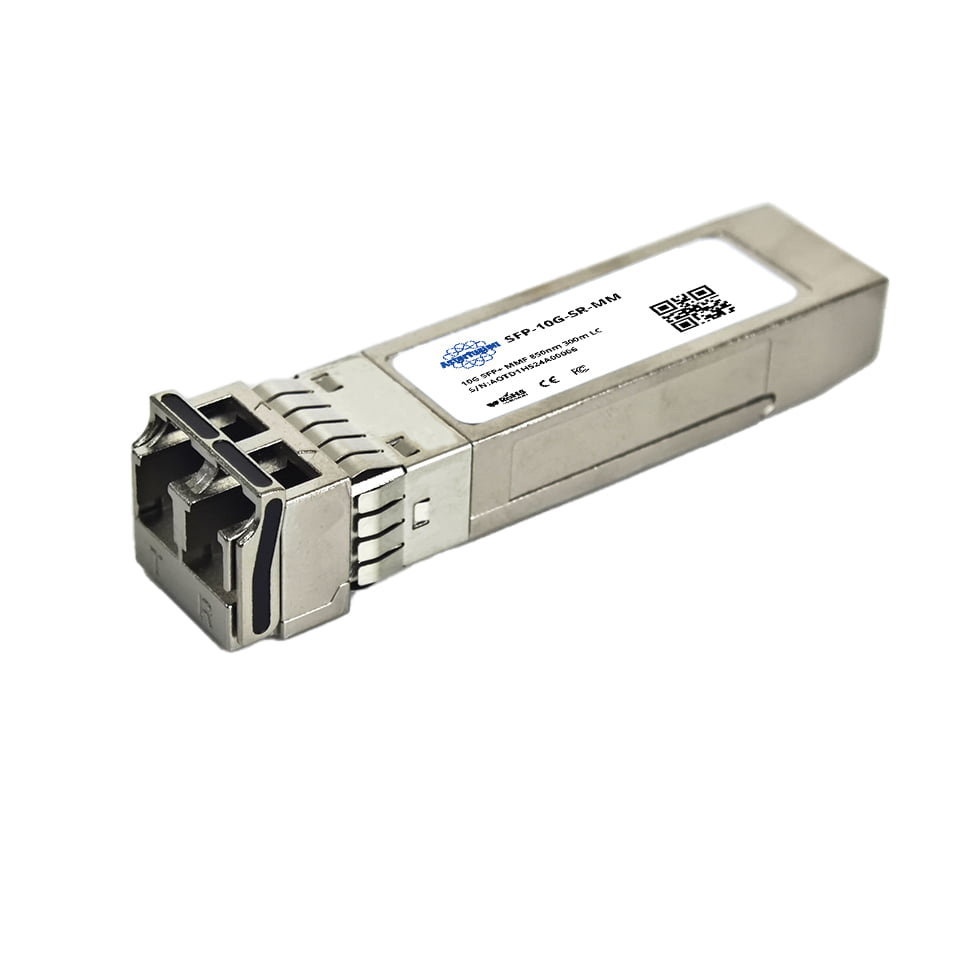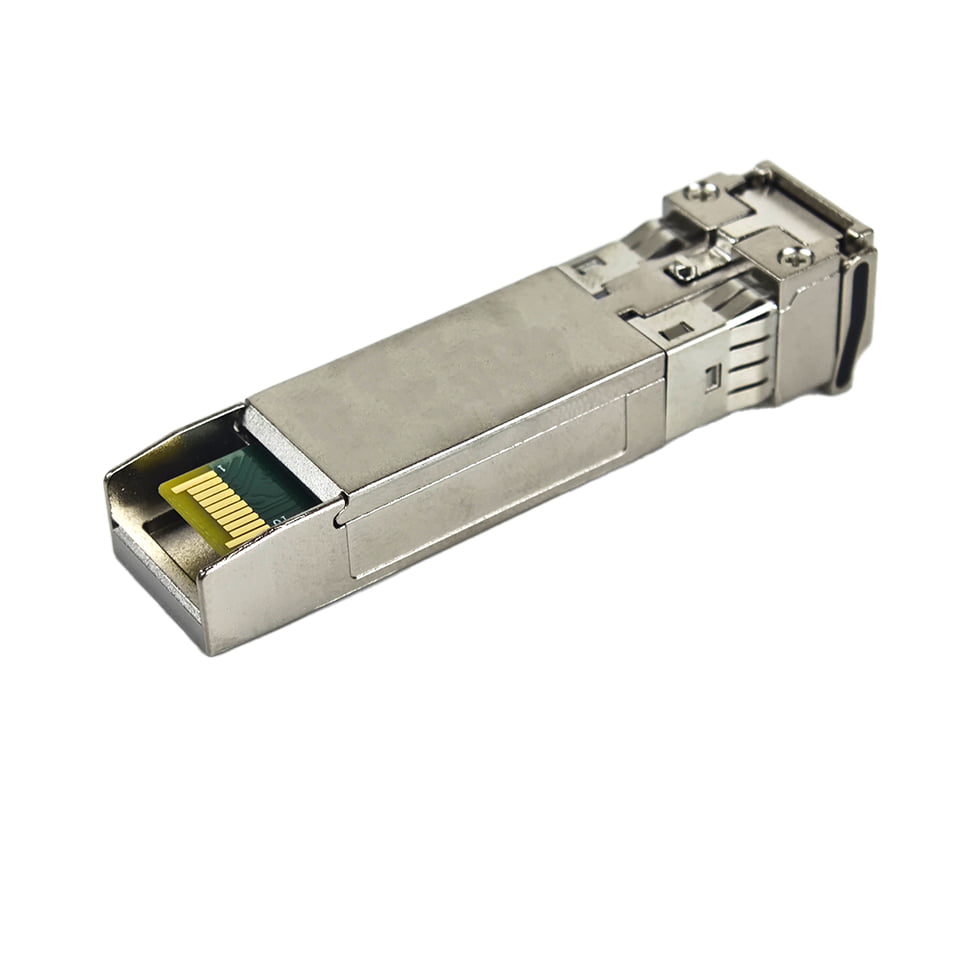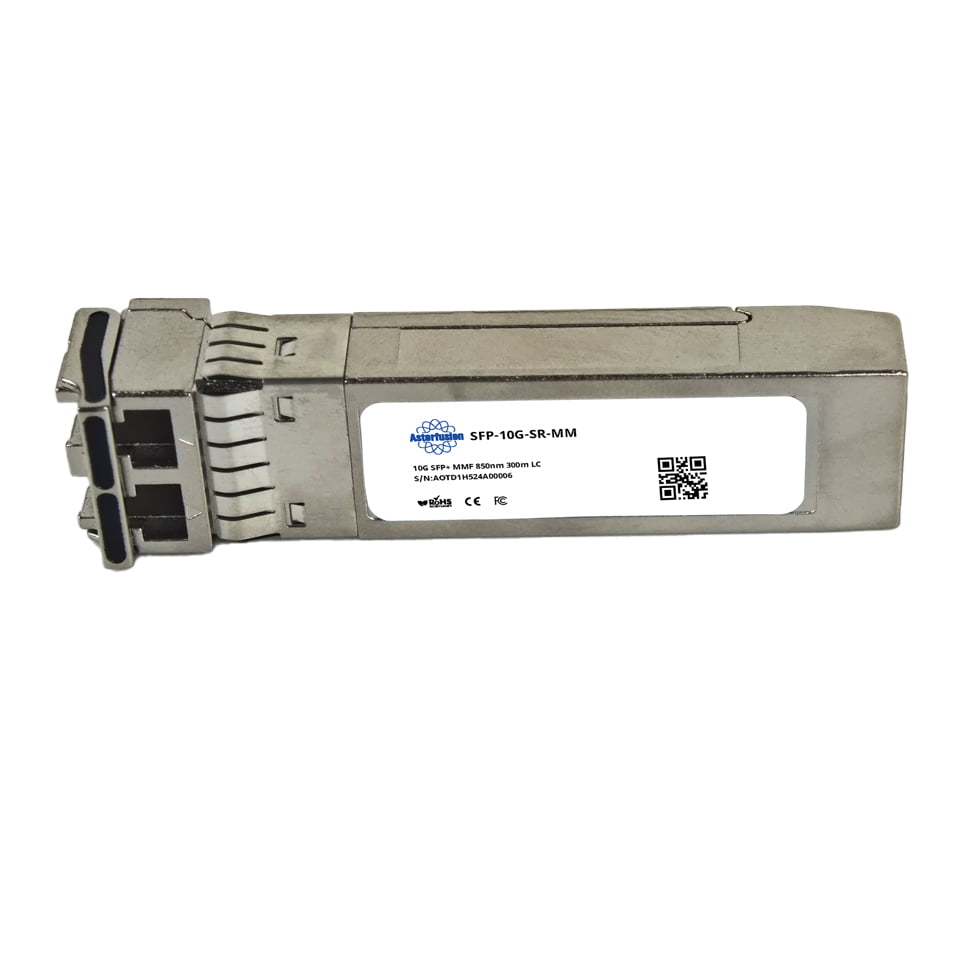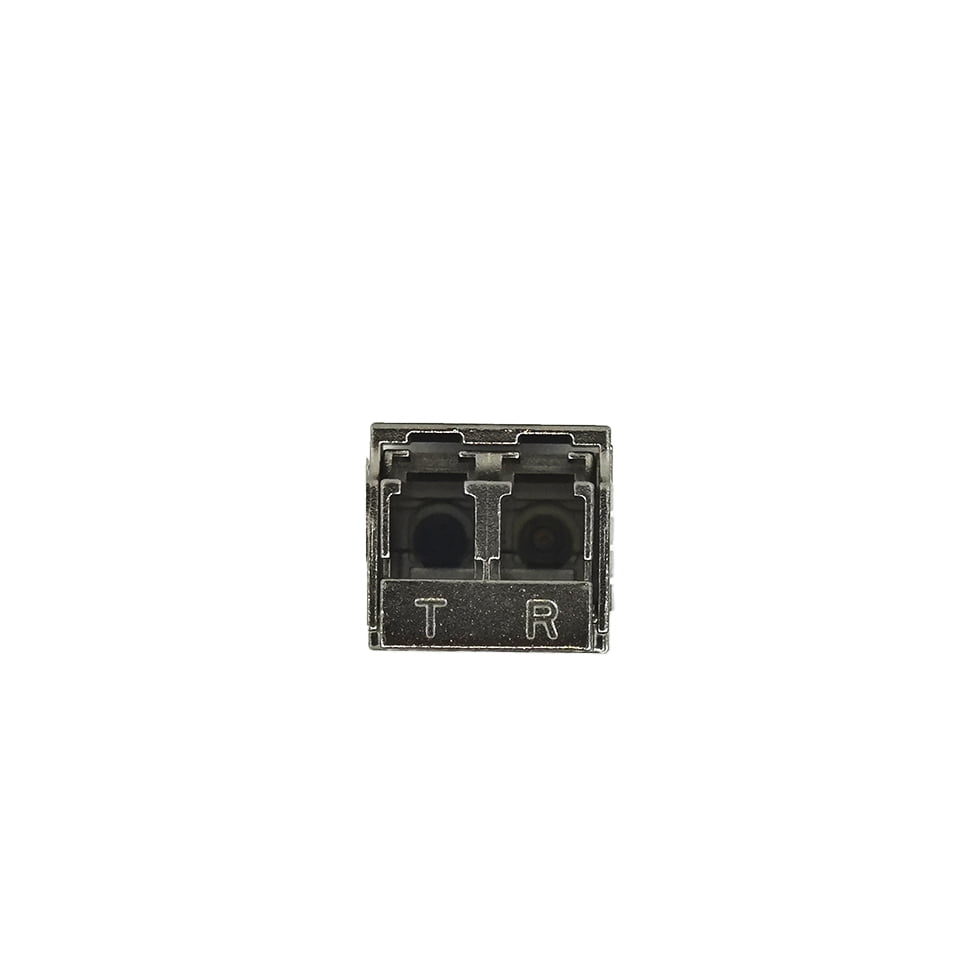10GBASE-SR 850nm 300m DOM Duplex LC/UPC MMF Optical Transceiver Module
10GBASE-SR 850nm 300m DOM Duplex LC/UPC MMF Optical Transceiver Module
OT-10G-SFP-SR
$15.00
-
Hot-Pluggable Plug-and-Play SFP compliant.
-
850nm VCSEL Transmitter and PIN Photo-Detector.
-
SFF-8431 Standard Compliance.
-
Maximum Power Consumption of 0.8W.
-
Digital Optical Monitoring: Enables Strong Diagnostic Capabilities.
-
Class 1 Laser, RoHS Compliant: Safe, Environmentally Friendly.
10GBASE-SR SFP+ Transceiver Module (MMF, 850nm, 300m, LC, DOM)
10GBASE-SR SFP+ Transceiver Module (MMF, 850nm, 300m, LC, DOM)
The SFP+ 10Gb SR optical transceiver is designed for 10 Gigabit Ethernet applications and meets SFF-843 electrical interface specifications as well as IEEE 802.3ae standards for best performance and signal security. SFP+ 10GBASE-SR supports a 300m link over 2000MHz/km OM3 MMF. This optical module offers the Transmit Disable (Tx_Dis) and Transmit Fault (TFault) functions for laser operation control and fault detection. Furthermore, the SFP+ SR 10G transceiver module includes a Loss of Signal (Rx_LOS) indicator that detects inadequate optical signal levels, which could indicate cable problems or a non-functioning transmitter. This 10G transceiver is ideal for enterprise communication links, data center LANs, and SAN networks.
Specification
|
Certifications



FAQ
What type of light technology does this receiver use?
For the 850nm frequency, a vertical-cavity surface-emitting laser (VCSEL) is likely used by this receiver. They’re not expensive and work well for short-range tasks like this SFP+ module.
How much power does an SFP transceiver use differently from an SFP+ transceiver?
Most of the time, SFP+ transceivers use a little more power than SFP transceivers because they can handle 10 Gigabit Ethernet instead of just 1 Gigabit Ethernet. When SFP+ is used in a data center, it still meets strict rules for how much power it uses.
What is the way the duplex LC/UPC connection works?
As you can see, this transceiver has two LC ports, and each one has an Ultra-Polished Connector (UPC) finish. For fiber optic links, LC connectors are small and can be used in some ways. To get the best transmission performance, UPC makes sure that the light signal has very little backward reflection. It is possible to communicate in both directions because each LC connection can send and receive data on its own.
Is there a version of this receiver that works with single-mode fiber?
300-meter distance and an 850nm wavelength are typical for multi-mode fiber (MMF). But it works at a specific frequency, which is usually 1310nm or 1550nm. To go over lengths of 10 km or more, you need different types of connectors, like SC. There are widely available single-mode fiber SFP+ transceivers, but they are not the same as the MMF variant in certain ways.
Can SFP+ transceivers work with SFP ports?
SFP+ transceivers can’t fit into SFP ports because of a small change in how they are built. However, some SFP+ transceivers may be able to support SFP ports in a way that works with older devices. In this case, the SFP+ module will work at a slower SFP speed (1 Gbps).






